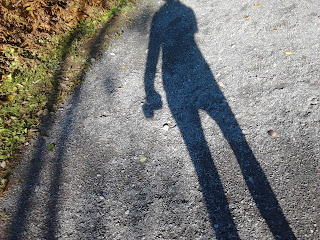Smartphone Photography
|
Sean McGrath Photography |
The theme that Sean impressed upon his audience was that taking pictures is all about capturing a moment in time that you will never again experience. He stressed that managing to get a shot of an expression on someone's face, two people interacting, or an evening sky, is more important that whether or not it is technically correct. Some of his favorite photos, he says, may not be perfectly focused or in the best light, but they are meaningful because of the content.

Technical Stuff:
The interpretation I take from his philosophy is that more natural looking photos are better that ones that are too carefully arranged and "perfectly" posed. It is also about having a camera at the ready in case you happen upon a "Kodak Moment". So, that means for most of us our cell phones are becoming our most common picture taking apparatus. In fact, according to Sean McGrath's talk, more and more photographers (including professionals) are using their smartphones as opposed to sophisticated, expensive cameras to take pictures.
So ...... my challenge now is to figure out how to take the best pictures I can with the little smartphone that I inherited from my husband (I know I will eventually have to upgrade). I've conducted a little research and so far I have learned a few things about using a smartphone for picture taking (mind you I have a long way to go!)
- avoid using a flash (makes lighting too harsh)
- don't use the zoom for making things close up - better to crop later since by using the zoom you loose picture quality
- take the time to learn about your camera app - explore all the settings etc.
- use the "macro" shooting mode for close ups (my camera phone only has 4 shooting modes - single shot, smile shot, continuous, and panorama).Smile shot is new to me. Apparently you aim the camera lens at a person's face and it automatically takes the photo when they smile!) I found "macro" under settings - "focus mode"!
- if you have a photo that is very "busy" (a lot of stuff in it) you can tone it down by editing it into black and white.
- use HDR mode to bring clarity to areas in shadow. This is a very cool option. For more info check out this link
- "white balance" use your settings to adjust the "white balance" ... in other words to make sure the colours (particularly whites) are "true" not yellow or bluish. In settings it's usually "sunny", "indoors", "cloudy" etc.
- clean your lens periodically, especially if you are stuffing it in a purse or pocket!
Composition:
- learn about the "rule of thirds" - use a grid on your camera to help with composition (center of interest should not be in the center!) rule of thirds- digital photography school
- horizon lines should be in the top or bottom third of the photo (not in the middle)
- vary the angle - to make the shot more interesting
- check out the background - make sure a tree is not growing out of someone's head!
- after you have learned the rules ...... then break them! (to get something interesting)
Here are some photos that I have experimented with, in edit to attempt to apply some of the composition rules mentioned above.
 |
| An attempt to use the "rule of thirds" with the focal point not in the middle. |
 |
| The Marina Bay Sands in Singapore - I used "edit" to make the horizon in the lower third. |
.jpg) |
| Halong Bay - Vietmam. - I made the horizon in the lower third because I thought the water had more visual interest. |
| Trying to use the "rule of thirds" as well as putting the horizon in the top third of the photo. |
.jpg) |
| I tried to reduce the "busy" background by using black and white, but I guess I can't do much about the gramophone speaker coming out of the guy's head! |
Backing Up!
One of the most important tips Sean McGrath stressed was backing up your photos. In yesteryear, pictures could always be produced or renewed from unprocessed film, negatives or old photos, but if all your pics are on your computer only and it crashes .... your out of luck. Sean highly recommends backing up you precious pics on an external hard drive or an online program such as a "cloud". I just backed up all my photos on Google +. I'm still getting used to the program but so far so good!
Great sites!
Below are some great links. The last one is a very simple, practical video guide (11 min.) for taking photos with your smartphone. The second last is a very cool video with some awesome ways to create interesting photos with the camera app on your phone. Check out the Cooph (Cooperative of Photography) website for some great inspiration! Have fun!



Comments
Post a Comment